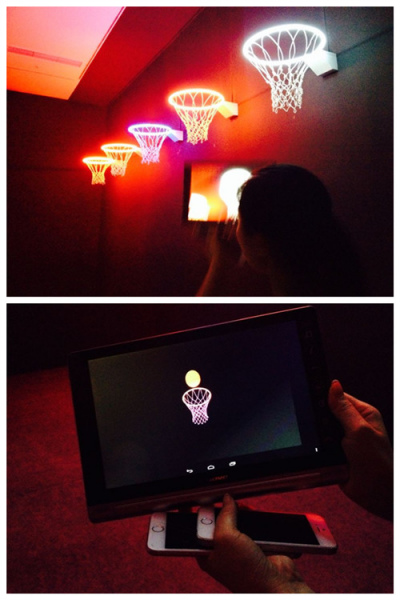
The Future Particles by Tian Xiaolei. 3D printed particles form future creatures that may exist in the future. (Photo: Ecns.cn/Qian Ruisha)
(ECNS) – The future of exhibitions will not only let you see, but also hear, smell, feel, and spark the wildest imagination with the help of the most avant-garde technology.
Turn on the camera provided by the museum, and a ThinkPad S5 Yoga takes the audience beyond a metal globe about five meters tall – an artwork by renowned sculptor Sui Jianguo – on a virtual tour to the universe, with planets and dusts flying about.
It's not a scene from "Night at the Museum," but what wowed people at the Today Art Museum when it kicked off the Future Gallery project on Thursday afternoon.
Initiated by Museum Director Alex Gao, architect Wang Hu and Sui Jianguo, the project uses a virtual exhibition and AR (augmented reality) display to offer a novel experience.
The gallery presents works by 12 artists. American artist Suanne Anker simulated the inside of microorganisms and created models with 3D printing. Artist Tian Xiaolei also used 3D printing to create models of possible creatures in the future.
If one wonders what will happen when a ball flies through one of the basketball hoops decorated with fragile neon tubes – an artwork by Zhou Wendou to symbolize sports and power — just take a photo and see the virtual movement of the ball toward the neon hoops.

"We apply the technologies to enhance people's feelings and spark maximum imagination," Wang said at the opening address. "Virtual exhibitions and AR allow the public, not only the elite, to understand art."
An increasing number of museums around the world are boosting their virtual existences. Still, the appearance of a poster of the project on a screen in New York's Times Square earlier this month stunned many.
"Chinese artists are riding the tides. They are constantly thinking and innovating," said gallery curator Su Lei.
When asked what the future of today's exhibitions will be like, Wang said it should be boundless and inclusive. It will be similar to a "black hole," as more and more artworks will be stored in the gallery's "cloud."
For viewers, visiting museums won't be only about taking photos or reading tags, but seeing the works come alive.
"The Internet has brought us new opportunities, and museums should embrace the changes and create new art spaces," Gao said. According to him, the gallery will invite at least 10 artists each year.




















































